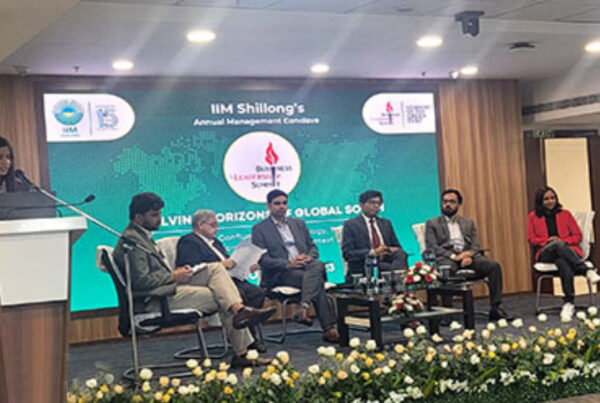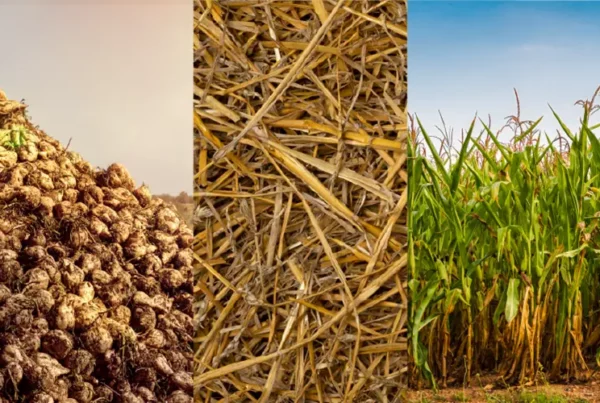These are interesting times for business in the Middle East, especially with the rise of the Kingdom of Saudi Arabia as an investment hub in the region.
The Middle East itself has emerged as a region of interest from several perspectives: its growing young population, reforms to boost economic performance to its true potential, its economic integration with the rest of the world amid globalization, fiscal reforms, taxation, liberalization of trade regimes to draw FDI, and its vulnerability to climate change. The region is increasingly attracting investor interest, with Saudi Arabia garnering the maximum attention.
Background
Nearly six years back, in 2016, the Crown Prince of Saudi Arabia, Mohammad bin Salman, launched Saudi ArabiaVision 2030, a roadmap to grow and diversify the economy by reducing its dependence on oil, attract foreign capital as part of investment strategy, and create jobs for Saudi citizens. The objective was to leverage the key strengths of Saudi Arabia – its strategic location and investment power.
Why economic diversification?
The purpose of initiating the economic diversification was to build a sustainable and stable economy, which reliance on oil could not afford. Stability would also create more jobs. Also, the current oil reserves in KSA, which currently generates close to 80% of its export income and nearly 40% of GDP from oil, are not estimated to last more than 60 years. Plus, with the world increasingly shifting to renewables, the demand for oil is estimated to decline by 2040. Hence, economic diversification was adopted as a strategy to address the situation.
A key variable of diversification is investment strategy. The rise of KSA as an investment hub needs to be understood against this backdrop.
What are the factors favoring the rise of KSA as an investment hub?
Government support
This is the biggest driver, considering that the government of any region is the most powerful force behind setting the direction of its growth.
Reforms and initiatives to boost investment
The socio-economic reforms and initiatives, driven by Saudi Arabia Vision 2030, have been attracting new businesses to the Kingdom, thereby bringing in huge investments and contributing to growth of business in the Middle East. In line with its top priority to increase the share of SMEs in GDP from 20% to 35% by 2030, the government has undertaken several initiatives:
- It established Monshaat, the Saudi General Authority for Small and Medium Enterprises, to develop, and promote SMEs. The authority launched a government-owned $1.33 billion VC firm to invest in the country’s startups and VC funds.
- In 2018, the Saudi Arabian General Investment Authority (SAGIA), now Ministry of Investment in Saudi Arabia (MISA), took a major step to reduce the time for licensing. It speeded up the process to less than 4 hours from nearly 53. As per latest data provided by the government, KSA registered a staggering more than 650% increase in investment licenses in Q2 2022compared to the same period in 2021. The top five sectors that account for most of the licenses are wholesale and retail, construction, manufacturing, accommodation and food services, and professional, scientific and technical.
- To raise awareness and provide seamless services to investors, the MISA began to offer e-services.
- KSA established a new Special Integrated Logistics Zone (ILBZ) to promote itself as a regional hub. Entities approved to conduct activities in the zone will be exempt from KSA’s corporate income tax for 50 years, while goods located here will be exempt from customs duties and VAT.
- Some of the other major reforms for diversifying from oil and attracting investments are hike in VAT from 5 to 15%; implementation of pricing guidelines and reporting rules for standardization; imposition of Real Estate Transaction Tax in KSA; abolition of the sponsorship system; and introduction of E-Invoicing regulations.
- The SAMA, in its bid to transform Saudi Arabia into a FinTech hub, is developing regulations to meet the requirements of new business models. It has introduced 11 regulations conducive to FinTech ideas.
- A non-profit – Misk Foundation – was established for empowering the youth in Saudi Arabia to encourage their participation in the knowledge economy. To facilitate Saudi Arabia’s development into one of the biggest science and technology hubs and its transition to a knowledge economy, the government is injecting billions in building a tech ecosystem. The country’s sovereign wealth fund is expected to double and surpass $1.1 trillion in assets under management by 2025. KSA has made investments totaling $6.4 billion in future technologies. In 2022, it launched LEAP, a tech conference, to promote opportunities in the technology sector.
- To modify the private sector sponsorship system, the Saudi Arabian Ministry of Human Resources and Social Development introduced a labor reform initiative (LRI). It is designed to give more freedom to workers in their movement between employers.
- There has been significant progress in healthcare and education too. Social reforms such as allowing women to drive and lifting the ban on cinema have also boosted the local entrepreneurship sentiment.
- Saudi Arabia is equally focused on sustainability. In its latest report, the MISAsaid that several sustainable and environmental projects are underway to attract investors, such as Green Riyadh, the water desalination project, and the Sakaka solar power plant.
Economic growth in Saudi Arabia– Outcome
As per data on Trading Economics, KSA’s GDP grew 11.8% year-on-year in Q2 2022, up from 9.9% in the previous quarter (preliminary estimates). This is the highest growth since Q3 2011, led by a 23.1% surge in oil activity. However, non-oil activities also grew 5.4%, while government services rose 2.2%.
According to the SAMA, FDI in Saudi Arabia rose by $2.0 billion in March 2022, vis-à-vis an increase of $1.9 billion in the prior quarter.
Massive investments by Saudi Arabia in its the domestic economy, coupled with the Kingdom’sdrive to draw inFDIasit improves the business environment in the country, have led to a positive outcome in terms of economic growth in Saudi Arabia.
KSA sealed 49 deals in Q2 2022, compared to 37 in Q1, recording additional $932 million in investments and generating 2,000 new jobs. By sector, the maximum number of deals were in the entrepreneurship and innovation sector, followed by education and training, and real estate.
Among nations, the UK is the leading investor in Saudi Arabia. The other top investors include the UAE, Jordan, and the US.
According to the report by MISA, Saudi Arabia’s efforts to attract investments are paying off. The country’s ranking on indicators, for instance, the Global Innovation Index and Consumer Confidence Index, has gone up by several notches.
Outlook
Given the thrust on investments as a means of economic diversification, Saudi Arabia has made some noticeable strides in terms of attracting investments. But this does not mean the road ahead is free of challenges.
First, it is doubtful that the economy’s dependence on oil will reduce drastically over the given timeframe. Given that the share of oil, despite declining from 65% in 1991 still stood at 42% in 2019 (as per a study by King Abdullah Petroleum Studies and Research Center), means it is a long road ahead.
Second, it needs to draw much more investments, especially for some of its multi-billion Euro projects, such as Neom City. This, more so because several non-oil activities are supported by money from oil.
Plus, it will need to prepare its people to shed the comfort associated with stability of job in public sector and prepare for private sector employments. The change in lifestyle that this would entail may not afford an easy switch. This will require removing further barriers to private sector development as part of investment strategy and promoting competitive industries with higher paying jobs.
It will also mean coming up with more favorable policies for taxation under fiscal strategy and legal structures, for simplifying immigration processes, obtaining government approvals, and for social security and regulatory compliance.
Addressing these issues notwithstanding, a rather interesting development is the recent stance of the Saudi government. Led by the spike in oil prices that have constantly been above $100, Saudi Arabia has recorded a nearly $15 billion budget surplus so far in 2022, which is expected to surge past $75 billion toward the end of the year. However, the government has decided to not use it to increase spending, and rather stash it, considering the current volatility in stock markets. It plans to wisely strategize and invest in the Public Investment Fund (Saudi PIF).
How this change in fiscal strategy will impact the investment scenario and business in the Middle East only time will tell.
For now, Saudi Arabia has a fast-evolving business environment and is an emerging market. The country is working actively to promote itself as a hub of knowledge, technology, tourism, entertainment, infrastructure construction, and above all, as a conduit providing access to a huge market. It is looking to build its influence in the Middle East as the geopolitical capital of the region. The more it works to address the complexity of existing regulations and create a favorable environment by creating policies conducive to growth and against corruption, the more it will create a win-win proposition for businesses.
For more on consumer insights, please connect with Suyog Keluskar, Director at Avalon Global Research.




